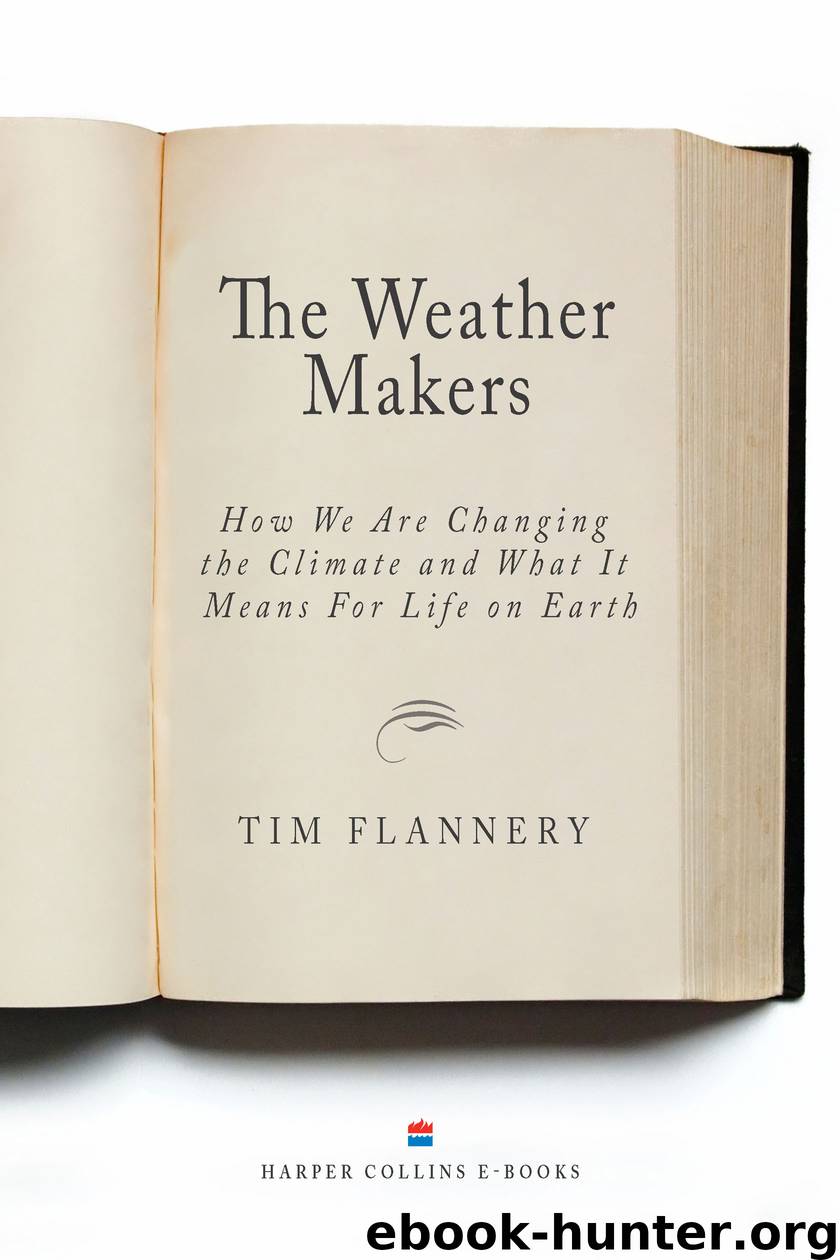The Weather Makers by Tim Flannery

Author:Tim Flannery [Tim Flannery ]
Language: eng
Format: epub
ISBN: 9781554689590
Publisher: HarperCollins
TWENTY
BOILING THE ABYSS
Let us think of them that sleep
Full many a fathom deep…
THOMAS CAMPBELL, ‘The Battle of the Baltic’
When marine biologists trawl the ocean’s depths and haul up the bizarre creatures that reside there, the animals—unavoidably—are already dying. Black, toothsome bodies of deep-sea anglers lie inert, their luminescence slowing to a flicker, while predators such as the stoplight loosejaw (Malacosteus niger) grow pale and vomit up their last meal, which is often a fish larger than itself. Within minutes movement ceases, and the eyes of a creature that has been plucked from its element glaze over.
It’s the change in pressure that killed them, scientists used to say, for this creature’s world is one where the force of the kilometres-high column of water overhead is so intense that a submarine would buckle in an instant. As proof of this idea experts pointed to those few deep-sea fishes that have swim-bladders. They reach the surface grossly distorted, their air-sacs so swollen with expanding gas that their bodies stretch to bursting. Despite such gruesome ‘proof’, we now know differently.
In your imagination, grit your teeth and pick up a hairy seadevil (Caulophryne polynema) that has just emerged from a depth of three kilometres. Then toss its black, sack-like and filament-covered body (trust me, it is surely the most grotesque of all fishes) into a bucket of icy sea water. Now step back. Within minutes vitality will return to its frame, its great fang-studded jaws will snap, and the filament-clotted ‘fishing rod’ that protrudes from between its eyes will flicker. The creature has recovered from the trauma of its ascent, demonstrating that a moment ago its life was being threatened not by pressure but by warmth; they are denizens of the deep ocean water, where temperatures hover near zero. Even water temperatures that would chill us to death in minutes are fatally warm to these fish.
The structure of the world’s oceans is critical to our climate. There are three layers, separated by their temperature. The top 100 metres or so vary enormously in temperature; near the Poles it can be below zero, while at the equator it can exceed 30°C. Below this familiar, light-filled world, to the depth of around a kilometre, is a zone of temperature transition—as you descend, so does the mercury in the thermometer. At around a kilometre down we have reached the world’s deep ocean water, and from bottom to top it’s remarkably stable in temperature—varying between -0.5°C (it can be below freezing and not turn to ice because of the salt) and 4°C. Most of the water in this lightless realm is exported from Antarctica, where it has been chilled to near freezing point by submarine currents.
Let’s briefly consider the Poles, where the icy water of the deep ocean comes to the surface. Richard Feely of the Pacific Marine Environmental Laboratory and his colleagues have investigated what might happen in these regions as more CO2 is absorbed. The oceans become acid, and because the ocean’s buffer, carbonate, is in limited supply it’s liable to drop below the level at which it can be used by shell-forming animals.
Download
This site does not store any files on its server. We only index and link to content provided by other sites. Please contact the content providers to delete copyright contents if any and email us, we'll remove relevant links or contents immediately.
Man-made Catastrophes and Risk Information Concealment by Dmitry Chernov & Didier Sornette(5921)
The Revenge of Geography: What the Map Tells Us About Coming Conflicts and the Battle Against Fate by Kaplan Robert D(4035)
Zero Waste Home by Bea Johnson(3777)
COSMOS by Carl Sagan(3554)
Good by S. Walden(3486)
In a Sunburned Country by Bill Bryson(3481)
The Fate of Rome: Climate, Disease, and the End of an Empire (The Princeton History of the Ancient World) by Kyle Harper(3003)
A Wilder Time by William E. Glassley(2818)
Camino Island by John Grisham(2762)
The Ogre by Doug Scott(2631)
Organic Mushroom Farming and Mycoremediation by Tradd Cotter(2626)
Human Dynamics Research in Smart and Connected Communities by Shih-Lung Shaw & Daniel Sui(2466)
Energy Myths and Realities by Vaclav Smil(2438)
The Traveler's Gift by Andy Andrews(2409)
9781803241661-PYTHON FOR ARCGIS PRO by Unknown(2321)
Inside the Middle East by Avi Melamed(2305)
Birds of New Guinea by Pratt Thane K.; Beehler Bruce M.; Anderton John C(2224)
A History of Warfare by John Keegan(2186)
And the Band Played On by Randy Shilts(2129)
